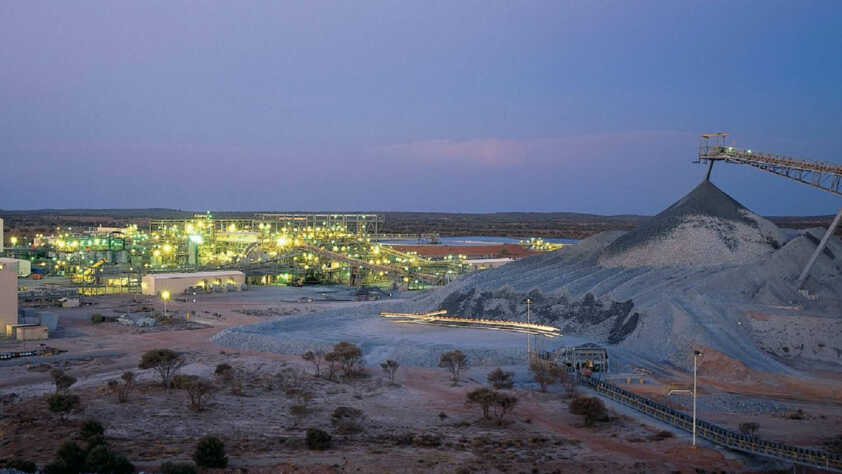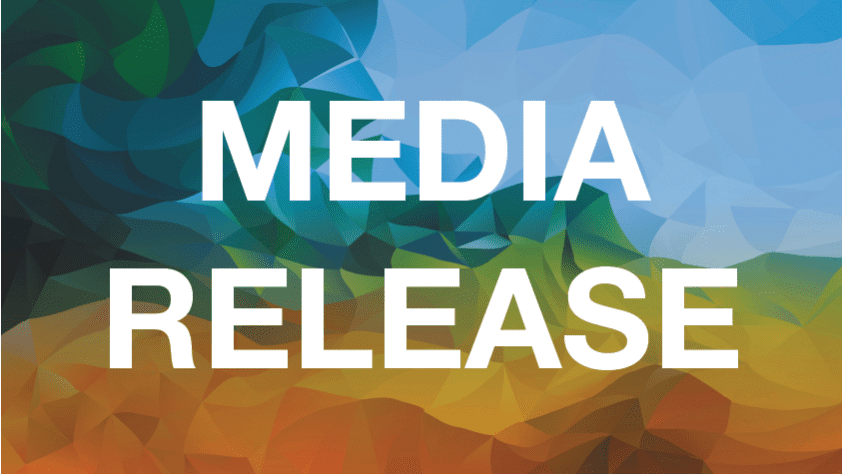CME Director Nicole Roocke chats with ABC Kimberley Mornings presenter George Manning about the release of a CME paper on infrastructure requirements in the Kimberley.
GEORGE MANNING
The Chamber of Minerals and Energy have just released a position paper called Shaping Growth in the Kimberley Region. It says it recognises the emerging significance in the Kimberley Region and the paper highlights that the resources sector can interact with other industries and stakeholders in the region. Director of the Chamber, Nicole Roocke, joins me now. Nicole, a very good morning to you.
NICOLE ROOCKE
Thanks for having me George.
GEORGE MANNING
I know it’s very, very busy times for you. Because, you know coincidentally there is a forum advocating cultural ecotourism taking place at the moment. So, do you think that resources and ecotourism can coexist?
NICOLE ROOCKE
George, I certainly do believe that both tourism and the resources sector can coexist. I think what it requires though, is for us to look at where are there commonality of issues for us and to be able to commence dialogue, commence the conversation earlier about how we can work together, so that we don’t limit each other’s opportunities, but instead generate synergies for a region like the Kimberley.
GEORGE MANNING
Nicole, why has the Chamber decided now is the time to release a paper on shaping growth in the Kimberley region?
NICOLE ROOCKE
The Chamber’s been interested in what’s been happening in the Kimberley region for a number of years. About two years ago we released a paper looking at policies and planning and partnerships to be able to have responsible resource development in the Kimberley and one of the things that that required was that we needed to look at having a common understanding of what were potential infrastructure constraints and so that’s what this subsequent piece of work is looking at.
GEORGE MANNING
So it’s a coincidence then that we’ve also got James Price Point on the table, very heavily so at the moment.
NICOLE ROOCKE
Certainly and when you look across the broader Kimberley region, it is a region that is highly prospective for a wide range of minerals and hydrocarbons. But it’s also a region where high costs make it very prohibitive for those projects to come to fruition. So what we’ve been looking at is what are some of those infrastructure constraints and the ones that we’ve identified aren’t actually just specific to the resource sector, if those infrastructure constraints are addressed and dealt with it is the benefit of the broader industry sectors that all operate up in the Kimberley.
GEORGE MANNING
Now you’ve mentioned infrastructure and it’s actually in several parts isn’t it? Roads, housing, ports, water, I guess we could also add airports to that because if we were to develop in the resources sector I’m sure we’ll be seeing a lot of fly-in fly-out and that necessity would mean upgrading what we’ve got in the way of airports in the Kimberley at the moment.
NICOLE ROOCKE
Certainly airports in regional areas are a critical issue, particularly when construction is occurring. When I look at the various projects that are happening across the board up in the Kimberley region and the other main issue that our Kimberley Regional Council is looking at is how do we engage better with Indigenous people in the Kimberley to be able to enable them to get employment opportunities in our sector. How do they get the right skills and how do they get the opportunities to be able to work in the sector. Meaning that we can have a local workforce.
GEORGE MANNING
You do I suppose recognise you know the fact that like Argyle Diamonds and so on are employing Indigenous people, do you take a great deal of interest in how Indigenous people are trained up to go into these resource positions?
NICOLE ROOCKE
We certainly do take a great interest in that and at the recent meeting that we had up in Kununurra that was the main topic of conversation. Some of the companies like Argyle as you’ve mentioned, Panoramic Resources as you’ve already mentioned have been working with the local Aboriginal people for a long time now to be able to provide training opportunities and what we’re looking at doing is how do we share the lessons that they’ve learnt with other emerging operators up in the region. So that we’re not reinventing the wheel but rather being able to offer training programs, offer opportunities that can make sure Aboriginal people can engage with our sector.
GEORGE MANNING
Nicole, the paper also points out that investments very necessary for the infrastructure that’s needed to go ahead for further development or all industries could be curtailed.
NICOLE ROOCKE
Our view very much is that unless investment is made then the further development will be constrained up in the Kimberley region. What we’re keen to now do is provide a consolidated view from the resources sector is to be working with other bodies such as the Kimberley Development Commission, such as the Kimberley Regional Planning Committee, is to look at how do we now implement project plan to be able to get that infrastructure to come to fruition. Who are the people we need to be partnering with? And what are the leverage points in Government that we need to be working together with, with the Kimberley community to get this first happen?
GEORGE MANNING
We must talk of investment in just a moment, a reminder, this is ABC Kimberley, it’s eight minutes to 11, and I’m speaking with Nicole Roocke who’s the Director of the Chamber of Minerals and Energy. Investment, now is it going to be private, government or a combination of both?
NICOLE ROOCKE
I think realistically it would need to be a combination of all of the above in terms of private and public sector partnership to be able to make this come to fruition. What we need to be able to look at doing is understanding who, who has the responsibility to provide what infrastructure and what the different parties are able to bring to the table.
GEORGE MANNING
I know, you know, from experience driving across the Kimberley, one realises say from Broom to Kununurra is 1050 kilometres and literally everything that goes to the East Kimberley travels on that bitumen strip of road. That really is the most important length across the Kimberley.
NICOLE ROOCKE
It’s incredibly important that Great Northern Highway and the State Government have recently made an announcement regarding some investment in terms of upgrading the Highway, but its fundamentally important that we maintain that link to be able to allow the safe and dependable movement of larger volumes traffic all year round and that won’t just benefit the resources sector but will certainly benefit the tourism sector, the agriculture sector, it will benefit everyone across the board.
GEORGE MANNING
Now we’re talking of huge area and were talking roads, housing, ports, water and so on, in regards to the ports I know there’s been already the suggestion for the new port to go in just to the North of Derby at Point Torment, but, say for instance the James Price Point went ahead both have a harbour, a berthing facility there, how would that come into play with the plan of the Chamber.
NICOLE ROOCKE
I think there’s a need for a considerable amount of conversation with regard to the ports and what’s the preferred location with the ports going forward. Certainly for the East Kimberley the port of Wyndham is a fundamental asset and the projects that develop that will become more critical and I guess the consideration really does need to be given in terms of balancing what’s the preferred port location whether it be Broome, whether it be at James Price Point, whether is be at Derby, whether it be at Point Torment, but to be able to make sure that we’ve got a world class facility that can not just meet the needs of the resource sector but with the potential to increase agriculture production in the region as well.
GEORGE MANNING
Alright, just going back to the investment for moment Nicole. There’s going to be huge bucks, whether it be for just, you know, roads and housing forgoing the others at the time. But we’ve got to look for some return on our capital, so where does the Chamber see returns coming from?
NICOLE ROOCKE
I guess the returns will come from increase development up in the Kimberley region, so you know, certainly the Federal Government, the State Government, Industry won’t make that invest unless they can see a return on the capital that is put into these projects. So that’s why it’s important for I guess all stakeholders to be working together to be able to demonstrate that there’s a broad value proposition in this, in this investment. And realistically it’s something that‘s not going to happen tomorrow, but where the Chamber’s coming from is that unless we start having these conversations today unless we keep the investment into housing in the region, unless we address water supply and waste water treatment in the region, we’re going to find ourselves quickly in a catch-up mode where the cost of living up in the Kimberley goes even higher than what it already is.
GEORGE MANNING
I know the Chamber is the peak resource sector representative body in Western Australia and it really does represent the resource minerals section of the community, do you think it might worry some if you are so sharply focussed?
NICOLE ROOCKE
You know, our role certainly is to represent the minerals and energy sector of broadly Western Australia that occurs here. Our membership does account for about 95 per cent of the production value that comes out of Australia so what we are concerned about in the Kimberley region is ensuring that responsible resource development occurs. What we’re concern about is making sure the development that does occur does benefit the broader community through employment opportunities. As I indicated earlier what we’re keen to ensure is that the resource sector and all other industry sectors can coexist up in the Kimberley region.
GEORGE MANNING
Is there going to be a follow up to this paper do you think?
NICOLE ROOCKE
We will now certainly seek to work with organisations like the Kimberley Development Commission, with the Kimberley Regional Planning Committee to give consideration to how aligned our views are to their views and our preliminary conversations certainly indicate they are very aligned. And then what we will look to do is to, to partner with those organisations so that we can be a combined voice in arguing for the investments in the Kimberley region rather than just a sole voice.
GEORGE MANNING
I guess it’s just a forgone conclusion that the Kimberley, as it stands, without a great deal of development is already a very, very resource rich region.
NICOLE ROOCKE
It certainly is a very resource rich region and I think there’s lots of potential opportunity up there, not just for resources but for other industry sectors as well. And what we’re concerned about is making sure that we’re strategic and having the conversations early about that development and having it happen in a planned way.
GEORGE MANNING
Nicole, thank you very much for having our conversation this morning on ABC.
NICOLE ROOCKE
I appreciate the opportunity George.
GEORGE MANNING
Thank you. Nicole Roocke, Director of the Chamber of Minerals and Energy their position paper which was just released this morning.



